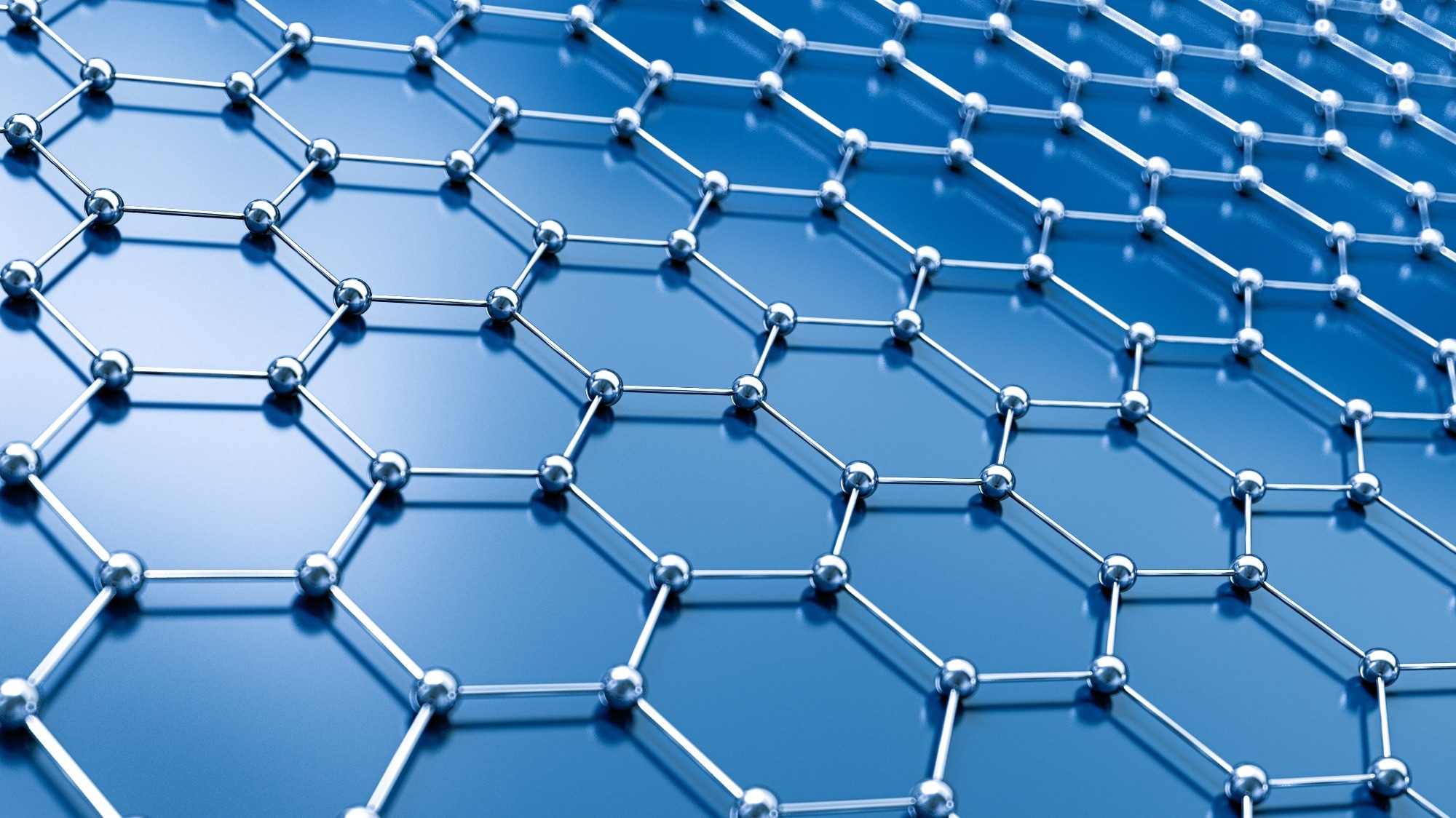Graphene was first discovered in 2004 by scientists at the University of Manchester. Since then, graphene has become a popular researched material that has been developed for use in numerous applications.
Graphene is interesting to scientists because of its unique properties, such as exceptional electrical conductivity, immense strength (it is roughly 200 times stronger than steel), and flexibility (its atomic structure allows it to bend without compromising its strength).1
In the biomedical field, graphene has already been used in a number of applications, from drug delivery systems and tissue engineering to bio-sensing and medical imaging.2
 Image Credit: artbase/Shutterstock.com
Image Credit: artbase/Shutterstock.com
Graphene in Drug Delivery Systems
A key advantage of graphene that drug delivery systems have leveraged is its large surface area. This allows for a large amount of a drug to be applied to its surface, enhancing its efficacy by delivering higher doses to target cells.
Additionally, the surface of the material is easily functionalized. This means that drug-delivery systems utilizing graphene can be customized to specifically target cells, tissues, or organs of the body, thus improving the specificity of drug delivery.3
Finally, graphene can be used for controlled release mechanisms that minimize the side effects associated with drug therapy.2
Graphene-Based Biosensors
By utilizing graphene, a new generation of biosensors has emerged that is highly powerful, sensitive, and has high specificity for detecting biomolecules, pathogens, and psychological states.
Antibodies, enzymes, or DNA probes can be affixed to the surface of graphene. When these biomolecules interact with a target analyte, this triggers a change in the electrical, mechanical, or optical properties of graphene, which are measured in order to quantify the presence of the target.
In medical diagnostics, graphene-based biosensors offer a method of early detection and monitoring of diseases including cancer, neurological disorders, and infectious diseases.4,5 As the development of graphene-based biosensors continues, it is possible their functionality will further evolve, allowing for real-time monitoring of biomarkers in patients.
Tissue Engineering and Regenerative Medicine
Tissue engineering and regenerative medicine (TERM) is a field of medical science dedicated to producing functional biological substitutes that maintain, improve, or restore the function of a bodily tissue.
One key aspect of this field if the creation of scaffolds that are used to allow cells to grow and develop into functional tissues. Graphene is being explored as a material for scaffold design due to its cinque properties of strength, electrical conductivity, and biocompatibility.6
While there are many advantages to using graphene-based scaffolds as opposed to traditional ones, safety concerns surrounding the use of graphene within the human body must continue to be assessed to ensure that there are no negative long-term effects.
Challenges and Safety Considerations
While graphene holds great promise for biomedical applications, there are numerous barriers surrounding biocompatibility that must be overcome before it can reach its full potential. There are also challenges surrounding the biodegradability of graphene-based materials, and the immune responses that these materials may induce.7 The long-term effects of graphene on the body must be studied extensively in longitudinal studies.
Studies that assess the impact of long-term exposure to graphene-based materials are ongoing. These studies will likely explore the impact of graphene exposure on cellular function, tissue integrity, and overall health.
In addition, it is necessary to run studies to explore the environmental impact of the disposal of graphene-based products to ensure that the impact of graphene production does not threaten the environment.
Future Prospectives and Ethical Implications
In the coming years, the application of graphene in biomedicine may make significant breakthroughs. As research continues, our understanding of graphene’s properties and how they can be leveraged into drug-delivery systems, bio-sensing platforms, and tissue engineering scaffolds will continue to grow. Ongoing research into the safety of graphene will help to unlock the door to widespread adoption of graphene-based applications in biomedicine.
As biomedical technologies with graphene become more advanced, it is important that the ethics of using such technologies are considered. These emerging technologies may help humans to live longer, in doing so, they evoke questions about accessibility and societal impact.
Ethical concerns arise around the fairness of access to such medical interventions, and the potential worsening of social inequalities in healthcare and quality of life.
Conclusion
Graphene has evoked extensive research interest due to its unique properties. It has found numerous applications in biomedicine, including drug delivery systems, bio-sensors, and tissue engineering. Biosensors that leverage graphene can be used for early disease diagnosis and tissue regeneration. However, challenges remain regarding biocompatibility, biodegradability, and safety.
In addition, these new technologies raise ethical concerns regarding access to potentially life-extending interventions. Continued research is necessary to facilitate future breakthroughs, and ethical frameworks must be established to allow graphene-based biomedicine applications to reach their full potential.
Resources
- Julie Chao. 2016. Graphene is Strong, But Is It Tough? [online]. Berkeley Lab. Available at: https://newscenter.lbl.gov/2016/02/08/graphene-is-strong-but-is-it-tough/
- Khakpour, E. et al. (2023) ‘Graphene-based nanomaterials for stimuli-sensitive controlled delivery of therapeutic molecules’, Frontiers in Bioengineering and Biotechnology, 11. doi:10.3389/fbioe.2023.1129768.
- Sattari, S. et al. (2021) ‘Functionalized graphene platforms for Anticancer Drug Delivery’, International Journal of Nanomedicine, Volume 16, pp. 5955–5980. doi:10.2147/ijn.s249712.
- Bai, Y., Xu, T. and Zhang, X. (2020) ‘Graphene-based biosensors for detection of biomarkers’, Micromachines, 11(1), p. 60. doi:10.3390/mi11010060.
- Chandrasekar, N. et al. (2023) ‘A brief review of graphene-based biosensors developed for rapid detection of covid-19 biomarkers’, Biosensors, 13(3), p. 307. doi:10.3390/bios13030307.
- Bellet, P. et al. (2021) ‘Graphene-based scaffolds for Regenerative Medicine’, Nanomaterials, 11(2), p. 404. doi:10.3390/nano11020404.
- Ou, L. et al. (2016) ‘Toxicity of graphene-family nanoparticles: A general review of the origins and Mechanisms’, Particle and Fibre Toxicology, 13(1). doi: 10.1186/s12989-016-0168-y.
Further Reading